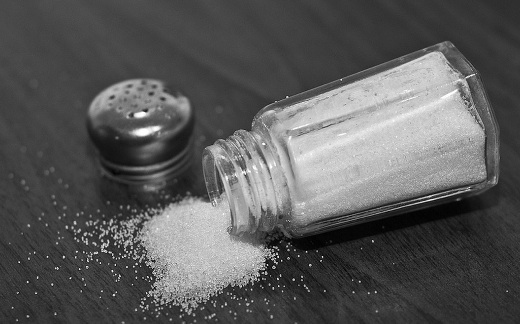The Double-Edge Health Effects of Supplemental Iodine
One of the most highly debated topics in medicinal science and alternative health is to what degree iodine is safe; moreover, to what degree should it be dispensed to the public. Suffice to say, there are two sides, both good and bad, to this vitally important nutrient.
The Body’s Need, the Health Benefits of Iodine
There is no doubt as to the health benefits of iodine on the human body, particularly regarding the thyroid gland, where medical science and healthcare practitioners have long known that without sufficient iodine in the body, the thyroid gland is unable to function correctly.
Federal Government and Food Industry Interventions
Once the importance of Iodine had been established, it was decided that table salt should be supplemented with an amount of iodine to cover all of a body’s daily needs. Consequently, a course of action was set in motion by a federal government decree: all table salt would be carefully regulated, thus ensuring that the general public received sufficient amounts of the mineral.
In 1924, after a very successful public health and advertising campaign, the Morton Salt Company began adding iodine to their salt; a practice that has continued in the food industry throughout the years.

As a result of such actions, cases of hypothyroidism decreased dramatically; and, the federal government and the food industry revelled in their glories.
Sea Salt Is Not Necessarily More Healthy
However, going by FDA findings from recent years, clinical testing of iodized table salt were found to have less than half of the prescribed and recommended amounts of iodine. Consequently, health-conscious enthusiasts have in recent years turned to natural sea salt, as it was deemed to have a larger concentration of iodine.
However, an unpleasant surprise was revealed to those who thought that they were getting an adequate supply of Iodine through their consumption of Sea salt – most of the sea salt sold in grocery stores, health food stores, and alternative health suppliers has had the iodine content removed. Essentially, most sea salt produced today is virtually just as processed as non-iodized white table salt.
Nutritional Benefits of Iodine and/or Sea Vegetables
There is no doubt as to the many abundant nutritional benefits of iodine, as found in the form of sea vegetables. However, iodine rich foods such as kelp may contain an exorbitantly high content of iodine; an approximate amount of 1,500-2,400 mcg of the mineral per gram of fresh material can be commonly found in brown algae species.
Furthermore, the Institute for Traditional Medicine states that red or green algae contain lower amounts of iodine than brown algae and may therefore prove more beneficial than the super iodine rich brown varieties.
The Dark Side of Iodine (Side effects)
As with many things in life, too much of a good thing may prove disastrous, this is especially true as far as iodine is concerned. The public runs a risk of simply overdosing on iodine supplements. The administration of iodine in any form through liquid, tablets, injections, or even natural foods may result in one, or several undesirable reactions and side-effects.
- Light dizziness – (also may occur with iodine insufficiency).
- Constipation and/or diarrhea.
- Insufficient equilibrium or balance.
- Visual distortions.
- Low and/or high blood pressure.
- Dry mouth or fever.
- Heart palpitations.
- Exacerbation of both hypothyroidism/hyperthyroidism.
Safe Amounts of Iodine
Determining the right amount of iodine for individuals is not a simple task. This is because individuals have different tolerance levels, and varied nutritional needs. However, the established health industry and federal government has set a daily recommendation of between 150 mcg (minimum) and 1,110 mcg (maximum) for adults.
The take home message are that the health benefits of iodine are a foundational and extremely important component for the human body. However, too much of the mineral can have very undesirable results. Furthermore, both the conventional medical establishment, and alternative health practitioners believe that adequate safe amounts of iodine can be derived from natural foods.
Go here: for a list of Iodine rich foods
Sources:
(1) McClure RD. Goiter prophylaxis with iodized salt. Science. 1935 Oct 18;82(2129):370–1
(2) Institute for Traditional Medicine, www.livestrong.com/article/410686-are-kelp-seaweed-high-in-Iodine/#ixzz1a7Azyfs8
(3) Right Diagnosis Article, http://www.rightdiagnosis.com/i/iron_supplements_adverse_effects/intro.htm
(4) Asian Food Info, http://www.aseanfood.info/Articles/11014330.pdf

